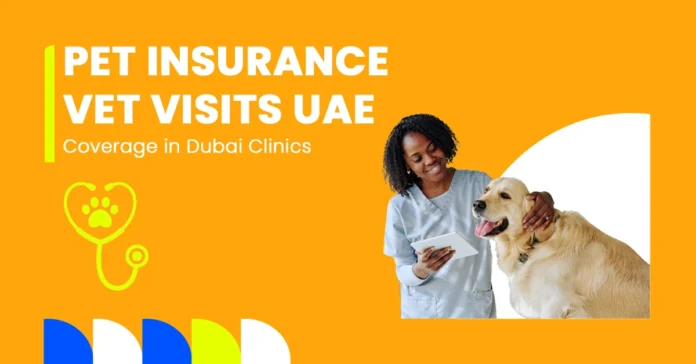If you’re planning to get pet insurance in the UAE, you should know that having the proper documentation is of primary importance, and it is not possible to insure a pet that is not registered. Insurance companies require specific documents that help them evaluate your pet’s health, ownership, and eligibility. Without these, your application might be delayed, or maybe even denied.
In this guide, we’ll walk you through the key documents for pet insurance in UAE and explain why they’re essential for a smooth application process. While requirements can vary slightly between insurers, most companies ask for the same core paperwork to approve coverage and process future claims.
Why Documentation Matters When Applying for Pet Insurance in the UAE
Like insuring other valuable possessions, pet insurance too is all about assessing the risk involved, and this is only possible through knowing what is being insured. The only way to know a pet, naturally, is by studying the documentation containing their information and medical history. And that’s why insurers need your pet’s paperwork; that is, to assess your pet’s risk profile, validate your identity, and confirm that your pet meets their coverage conditions.
Submitting the wrong documents, or not submitting them at all, can delay your approval or cause issues later when you need to file a claim. By understanding the pet insurance requirements UAE insurers expect from you, you’re setting yourself up for a smoother experience from day one.
Before we get into how to apply for pet insurance UAE, let’s look at the five key documents every applicant should prepare.
5 Essential Documents for Pet Insurance in the UAE
Gathering the correct paperwork is the first step toward a smooth application. Below are the five core documents for pet insurance in the UAE that most insurers will ask for.
Proof of Pet Ownership
To insure a pet, you must prove that you legally own it. This is one of the basic pet insurance requirements UAE providers enforce.

Accepted forms of proof include:
- An adoption certificate from a registered shelter
- A receipt from a pet store or breeder
- Official registration with Dubai Municipality or another local authority
Ownership documents confirm that you are responsible for the animal and have the authority to make insurance decisions on its behalf.
Vaccination Records and Microchip Details
All pets in the UAE must be vaccinated and microchipped, and these records are part of the required documents for pet insurance.

For dogs, standard vaccinations include:
- Rabies
- DHPPiL (Distemper, Hepatitis, Parvovirus, Parainfluenza, and Leptospirosis)
For cats, typical vaccinations include:
- Rabies
- FVRCP (Feline Viral Rhinotracheitis, Calicivirus, and Panleukopenia)
Microchipping is mandatory in most Emirates. You’ll need to provide the microchip number and proof that it’s registered.
These requirements are in place to ensure your pet is healthy and identifiable, which is especially important if you ever need to make a claim.
Recent Medical or Veterinary Health Certificate
A recent health certificate issued by a licensed vet gives insurers a snapshot of your pet’s current condition. It’s one of the most frequently requested documents for pet insurance.

This certificate typically includes:
- A full physical examination
- Weight, age, and general health status
- Notation of any current or chronic health issues
Because most policies exclude pre-existing conditions, this document allows the insurer to set clear coverage terms. It also helps prevent possible disputes in the future.
Identification Documents of the Owner
To complete your application, insurers will require ID from the pet owner. This is part of meeting the legal and administrative pet insurance requirements UAE authorities and insurers enforce.

Accepted ID includes:
- Emirates ID (front and back)
- Passport copy with residency visa
- UAE residence permit, if available
This ensures that you can be contacted for updates, renewals, or claims, and that the policy is legally tied to the rightful pet owner.
Pet’s Medical History or Previous Vet Records
In addition to a current health certificate, many insurers will ask for past veterinary records. This is especially important for older pets or those with a known health condition.

Medical history may include:
- Previous diagnoses, treatments, or surgeries
- Vaccination timelines
- Behavioral or hereditary conditions
Having this record ready is a big help when learning how to apply for pet insurance UAE residents can rely on. It also gives the insurer a full picture of your pet’s long-term health.
How to Apply for Pet Insurance UAE
Now that you’ve gathered your documents for pet insurance, let’s walk through how to apply for pet insurance UAE step by step.
Most providers make it easy to apply online, though some may offer in-person support as well. What’s important is that you understand the process, have your documents prepared, and follow the insurer’s exact instructions.
How to Apply for Pet Insurance UAE: Step-by-Step Application Process
- Compare insurance providers
The first thing to do when buying anything is choosing the product, and after that deciding on the provider. Since you would probably want a fair yet effective deal, it’s best to start by researching trusted insurers like MooPet or Oslo. Look at coverage types, annual limits, exclusions, and pricing.
Word to the wise: pick an insurance aggregator like Lookinsure for quick access to quotes from multiple providers all at once.
- Fill out the application form.
After you choose the type of policy that best fits your pet’s needs, you will need to fill in an application form. Most insurers will ask for pet details such as breed, age, weight, and medical background, which will then be used to determine your premium.
While you might be tempted to exclude certain pre-existing conditions for a lower premium, we recommend complete honesty, as any discrepancy can be used to nullify your claim.
- Upload or submit your documents.
After registering your pet’s name and medical history, you will be asked to upload the documents for pet insurance we listed above. Attach your files directly through the provider’s website or mobile app. Some may also allow email submissions. - Pay the premium
Once your application is accepted, you’ll be asked to make your first payment. Be sure to check whether the policy starts immediately or after a waiting period. It’s also good to know that many providers, including Lookinsure, now allow installment payments through services such as Tabby and Tamara.

Knowing how to apply for pet insurance UAE pet owners need today will help you avoid surprises and get coverage activated faster, so make sure you have the proper documentation on hand and just follow these steps.
Verification and Waiting Period
Once your application is submitted, the insurer will review your documents and verify your pet’s eligibility. During this time, a waiting period applies, usually 5 to 30 days, depending on the provider.
This period is one of the most important pet insurance requirements UAE insurers put in place in order to validate your pet’s health and ensure the policy isn’t being used for a pre-existing illness.
All information about your pet, including their breed, age, and medical record, will be used to assess the potential health risks they may be exposed to. Here’s what each of these criteria tells about your pet:
Breed: Certain breeds are known for their resilience, while others are notoriously prone to having health issues. So you should expect a higher premium if you have a Sphinx cat and a lower one for your hardy DHS.
Age: the same rule of thumb applies to age when it comes to insuring pets. Younger and older pets usually get ill more easily, so a puppy will definitely cost more to insure than a 4-5 year old dog.
Medical record: This is the main criterion for determining your insurance premium. If your pet has a long history of battling different health issues, then unfortunately, they will be considered a high-risk animal and hence will cost much more to insure than a pet that has never been to the vet.
Tips to Avoid Delays in Your Pet Insurance Application
Having your documents ready is only part of the process. Here are a few other ways to avoid unnecessary delays and make sure your pet’s coverage kicks in as soon as possible:
- Scan your documents clearly: avoid blurry photos or incomplete scans
- Label files properly (e.g., “Pet Name – VaccineRecord.pdf”)
- Double-check for completeness: take time to verify every document before sending it out. Just be patient.
- Keep everything in one folder: both on your computer and in hard copy.
- Confirm pet ownership through municipality registration, especially in Dubai and Abu Dhabi.
- If adopting or relocating a pet, request health records from the shelter or previous vet.
Being proactive helps you meet the pet insurance requirements UAE providers rely on to assess applications fairly.
Bonus: Checklist of Required Documents
Here’s a quick reference list to make your process easier:
- Proof of pet ownership
- Vaccination records and microchip info
- Recent veterinary health certificate
- Owner’s identification (Emirates ID or passport)
- Pet’s medical history or past vet records
Staying organized with these documents for pet insurance helps ensure fast approvals and smoother claims in the future. So just save his little checklist for when you are about to get your document in order, so you don’t miss anything.
Conclusion
One of the main things you should know if you are about to insure your pet is the required documents for pet insurance, which, as we mentioned above, include proof of registration and vaccination as well as your identification document.
The reason understanding how to apply for pet insurance UAE is important is that it can help you avoid common mistakes and delays. Likewise, being familiar with the pet insurance requirements UAE insurers enforce helps you prepare and apply with confidence and without having to worry about anything except your pet’s health.
Gather your paperwork, research your options, and protect your pet’s health and happiness today.
Frequently Answered Questions
What documents do I need for pet insurance in the UAE?
You’ll need five core documents for pet insurance: proof of ownership, vaccination and microchip records, a recent health certificate, owner ID, and full medical history.
How to apply for pet insurance UAE if I adopted my pet?
Use your official adoption certificate as proof of ownership. Then follow the standard steps for how to apply for pet insurance UAE, including submitting all required documents.
What are the pet insurance requirements UAE insurers usually ask for?
Most require vaccinations, microchipping, ownership proof, owner ID, and a medical history. Meeting these pet insurance requirements UAE providers list is crucial for approval.
Is microchipping mandatory when applying for pet insurance?
Yes. Microchipping is one of the non-negotiable pet insurance requirements UAE laws and providers uphold.
Can I apply without my pet’s full medical history?
It’s possible, but it may reduce your coverage or delay approval. Providing complete vet records makes how to apply for pet insurance UAE a much smoother process.



